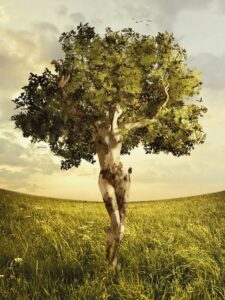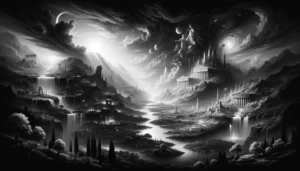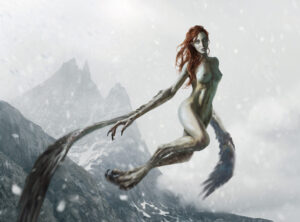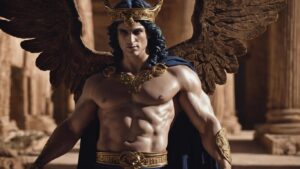Table of Contents
Dryads

In Greek mythology, nymphs known as dryads or tree nymphs guard specific trees, embodying the spirits of nature. They are closely tied to trees, portrayed as beautiful beings. The term ‘dryad,’ originating from the Greek word ‘drus,’ meaning oak, emphasizes their ancient tree association.
Origin
The term “dryad” originates from ancient Greek mythology, deriving from the Greek word “drus,” meaning oak. These mythical beings, known as nymphs, are closely tied to trees and forests. They actively serve as guardians of specific trees, embodying the essence and spirit of the natural world according to Greek mythology.
Family
Dryads are generally depicted as female spirits or nymphs associated with trees, forests, and nature. The concept of Dryads and their associations with specific types of trees may vary in different mythological traditions or works of literature.
Stories ant Myths
In Greek mythology, gods crafted tree spirits, female entities intertwined with trees. Each tree possessed its own spirit, crucial for tree well-being.
Hamadryads, a tree spirit type linked to oaks and poplars, believed in being born with a specific tree. Their existence depended on the tree’s health; if it died, so would the hamadryad.
Meliai, ash tree spirits, held a special place as daughters of the primordial goddess Gaia. Created before the first woman, they played a pivotal role in m
ankind’s creation.
Oreiades, mountain spirits associated with pine trees in wild places, engaged in playful activities like dances and frolics.
Maliades and Epimeliad, spirits tied to fruit trees, served as protectors for both trees and sheep, depicted as benevolent guardians.
Daphnaie, rare spirits linked with laurel trees, occasionally featured in stories involving Apollo and the laurel wreath.
Caryatids, tied to walnut trees, received less mention in myths than some other tree spirits.
Current Influence
No evidence of Dryads’ real-world influence. Fictional entities from Greek mythology linked to trees, lacking presence in modern contexts
However, it’s worth noting that mythological themes, including those involving nature spirits like Dryads, continue to inspire literature, art, and popular culture. People may draw on these ancient myths for creative expression, storytelling, and symbolic representation in various forms.
FAQ
What are Dryads?
Dryads are mythical creatures in Greek mythology, specifically nature spirits or nymphs associated with trees and forests. They are considered guardians of trees and are often depicted as female spirits.
What do dryads look like?
Dryads are typically portrayed as beautiful and ethereal beings, closely resembling human females. Their appearance is often linked to the type of tree they inhabit. The imagery may include features inspired by nature, such as leafy or woody elements, reflecting their connection to trees.
What are dryads in Greek mythology?
In Greek mythology, dryads are nymphs associated with trees and forests. They are part of a larger category of nature spirits and are specifically linked to the well-being and protection of trees. Dryads are known for their close ties to nature and their role in various myths and stories.
How long do dryads live?
The lifespan of dryads in Greek mythology is not explicitly defined, and it varies in different myths. In some stories, the life of a dryad is believed to be connected to the life of the tree they inhabit. If the tree dies, the dryad associated with it may also perish. This connection implies that the lifespan of a dryad is closely tied to the health and longevity of the tree they call home.





